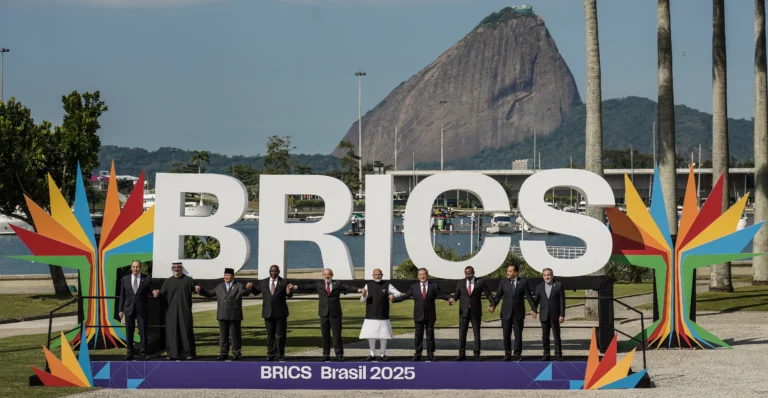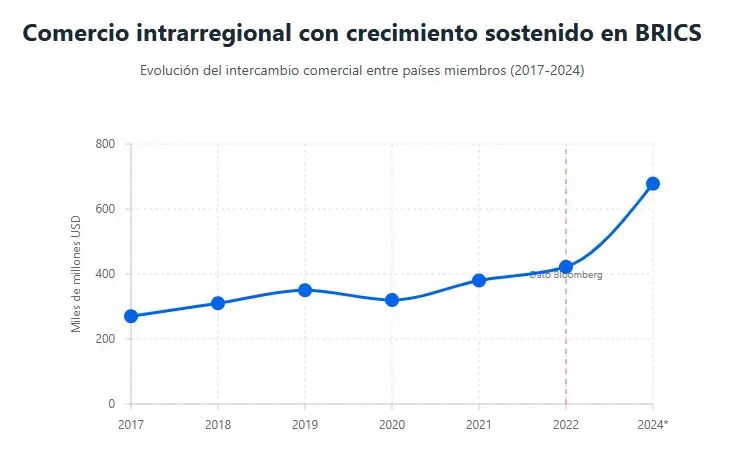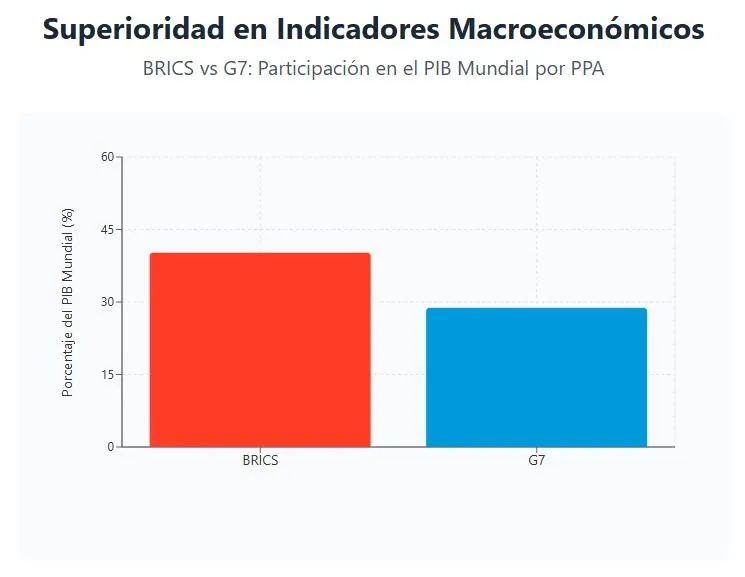BRICS vs G7: 5 Critical Insights Into the Rising Power of the Global South and Its Economic Influence

Rio de Janeiro – 06.07.2025 – 1st day of the BRICS Leaders’ Summit. Photo: Rafa Neddermeyer/BRICS Brazil/PR
July 6, 2025 Hour: 1:04 pm
Explore how BRICS surpasses the G7 in population, economic growth, and geopolitical influence — BRICS vs G7 shaping a new multipolar world order
Related: 7 Essential Insights from the Rising BRICS Summit 2025: A Critical Call for Global Peace and Reform
The Rise of BRICS: A Counterweight to the G7
Over the past 16 years, the BRICS alliance has emerged as the most influential geopolitical platform of the Global South, offering a real and growing alternative to the traditional dominance of Western powers represented by the G7.
Originally composed of Brazil, Russia, India, and China, with South Africa joining in 2010, the group expanded significantly from 2022 onward. New full members now include Egypt, Ethiopia, Iran, Indonesia, Saudi Arabia, and the United Arab Emirates, while several others hold observer or partner status, including Cuba, Bolivia, Nigeria, and Vietnam.
Today, BRICS represents 40.2% of global GDP (by PPP) and 46% of the world’s population, surpassing the G7 in several key indicators and signaling a major shift in global economic and political dynamics.

🔗 Internal Link: Read more about BRICS expansion →
1. Economic Powerhouse: BRICS Outpaces G7 in Key Metrics
While the G7 still holds a lead in per capita wealth and control over traditional financial institutions, BRICS has overtaken it in terms of overall economic size when measured by purchasing power parity (PPP).
- BRICS GDP (PPP): ~40.2% of global total
- G7 GDP (PPP): ~28.8% of global total
China alone accounts for 19.6% of global GDP (PPP), followed by India at 8.5%, Russia at 3.4%, and Brazil and Indonesia each contributing 2.4%. This diversified economic base reduces dependency on any single country, unlike the G7, where the U.S. dominates the bloc’s economic weight.

According to Russian Finance Minister Anton Siluanov, total financial assets within BRICS exceed $60 trillion, more than half of the global total, giving the bloc significant leverage in international markets.
🔗 External Link (DoFollow): IMF Report on Global Economic Outlook →
2. Demographic Strength and Democratic Legitimacy
One of BRICS’ most compelling advantages is its demographic scale. The bloc encompasses approximately 3.5 to 4 billion people, nearly 46% of the world’s population, compared to the G7’s roughly 800 million.
This massive population base gives BRICS greater democratic legitimacy in global decision-making and enhances its soft power and market potential. With rising middle classes in countries like India, Indonesia, and Brazil, the region also presents a growing consumer base that rivals Western economies.
Moreover, the inclusion of African and Asian nations expands BRICS’ voice across continents, reinforcing its role as a representative force for the Global South.
3. Financial Independence and Alternative Systems
A defining feature of BRICS is its push for financial autonomy. The New Development Bank (NDB), headquartered in Shanghai with a $100 billion capital base, has approved 120 projects worth $39 billion, focusing on infrastructure and sustainable development.
Additionally, the Contingent Reserve Arrangement (CRA) offers protection against balance-of-payments crises without reliance on the International Monetary Fund (IMF), strengthening the bloc’s financial sovereignty.
In recent years, BRICS countries have accelerated efforts to reduce dependence on the U.S. dollar through a shared financial messaging system among central banks. This initiative aims to facilitate trade in local currencies and shield member states from unilateral sanctions.
🔗 External Link (DoFollow): NDB Annual Report 2024 →
4. Science, Technology and Cultural Diplomacy
Beyond economics, BRICS has made notable strides in scientific cooperation, education, and cultural diplomacy.
The alliance includes a network of over 60 universities and research centers, working on strategic areas such as energy, information technology, climate change, and space exploration. Initiatives like the BRICSMATH.COM Olympiad and the Baikal BRICS Institute are helping develop a new generation of skilled professionals across member states.
In the space sector, BRICS collaborates on satellite data sharing and Earth observation programs, reducing technological dependence on the West and enhancing regional monitoring capabilities.
Culturally, events such as BRICS film festivals, theater exchanges, and sports competitions promote mutual understanding and identity building among member nations, creating a counter-narrative to Western-dominated global institutions.
5. Geopolitical Implications of the BRICS vs G7 Dynamic
The growing influence of BRICS vs G7 reflects a broader realignment in global power structures. As emerging economies seek greater autonomy from Western-dominated institutions, the BRICS platform has become a symbol of multipolarity — offering an alternative to traditional financial systems and geopolitical narratives. This shift is not merely economic but deeply political, as countries like India, Brazil, and South Africa advocate for a more balanced international order that recognizes the aspirations of the Global South.
Unlike the G7, which often functions as a closed circle of industrialized democracies with aligned foreign policies, BRICS vs G7 represents a more diverse coalition where sovereignty and non-interference are central principles. This allows nations historically marginalized by Western-led institutions to assert their interests on a global stage, promoting dialogue over unilateralism and cooperation over confrontation.
A New Era of Economic Diplomacy
As the BRICS vs G7 rivalry intensifies, the world is witnessing a transformation in how international relations are conducted. Trade agreements, investment flows, and development partnerships are increasingly shaped by BRICS members, who prioritize regional integration and mutual benefit over conditional aid and market liberalization. The push toward local currency trade settlements, bypassing the U.S. dollar, further underscores this trend toward financial independence.
This evolving framework positions BRICS vs G7 not just as competing blocs, but as contrasting models of global governance. While the G7 remains anchored in a unipolar past, BRICS is actively shaping a future where decision-making is more distributed, inclusive, and reflective of the world’s true economic and demographic realities.
Challenges Ahead for a Unified Global South
Despite its rapid rise, BRICS faces internal challenges, including political differences and the lack of a formal integration mechanism similar to the European Union.
Unlike the G7, which shares ideological alignment and institutional cohesion, BRICS must navigate diverse political systems and foreign policy priorities. For example, some members maintain strong ties with the U.S., complicating unified stances on global issues.
However, the momentum behind BRICS reflects a broader global trend: the decline of unipolarity and the search for a fairer, more inclusive international order.
As BRICS continues to expand and deepen cooperation, it positions itself as a critical player in reshaping global governance, economic development, and multilateral diplomacy.
📝 Executive Summary:
- BRICS has grown into a powerful alternative to the G7, representing 40.2% of global GDP (PPP) and 46% of the world’s population.
- The group includes 10 full members, with new additions like Indonesia, Saudi Arabia, and UAE boosting its global reach.
- Economically, BRICS outperforms the G7 in aggregate size and diversification, though the G7 remains dominant in per capita wealth.
- Financial independence is a key pillar, with initiatives like the New Development Bank and local currency trade agreements gaining traction.
- Scientific, technological, and cultural cooperation further strengthens the bloc’s unity and global presence.
- Internal diversity poses challenges, but BRICS continues to gain influence in a multipolar world order.
Author: JMVR
Source: BRICS NEWS






